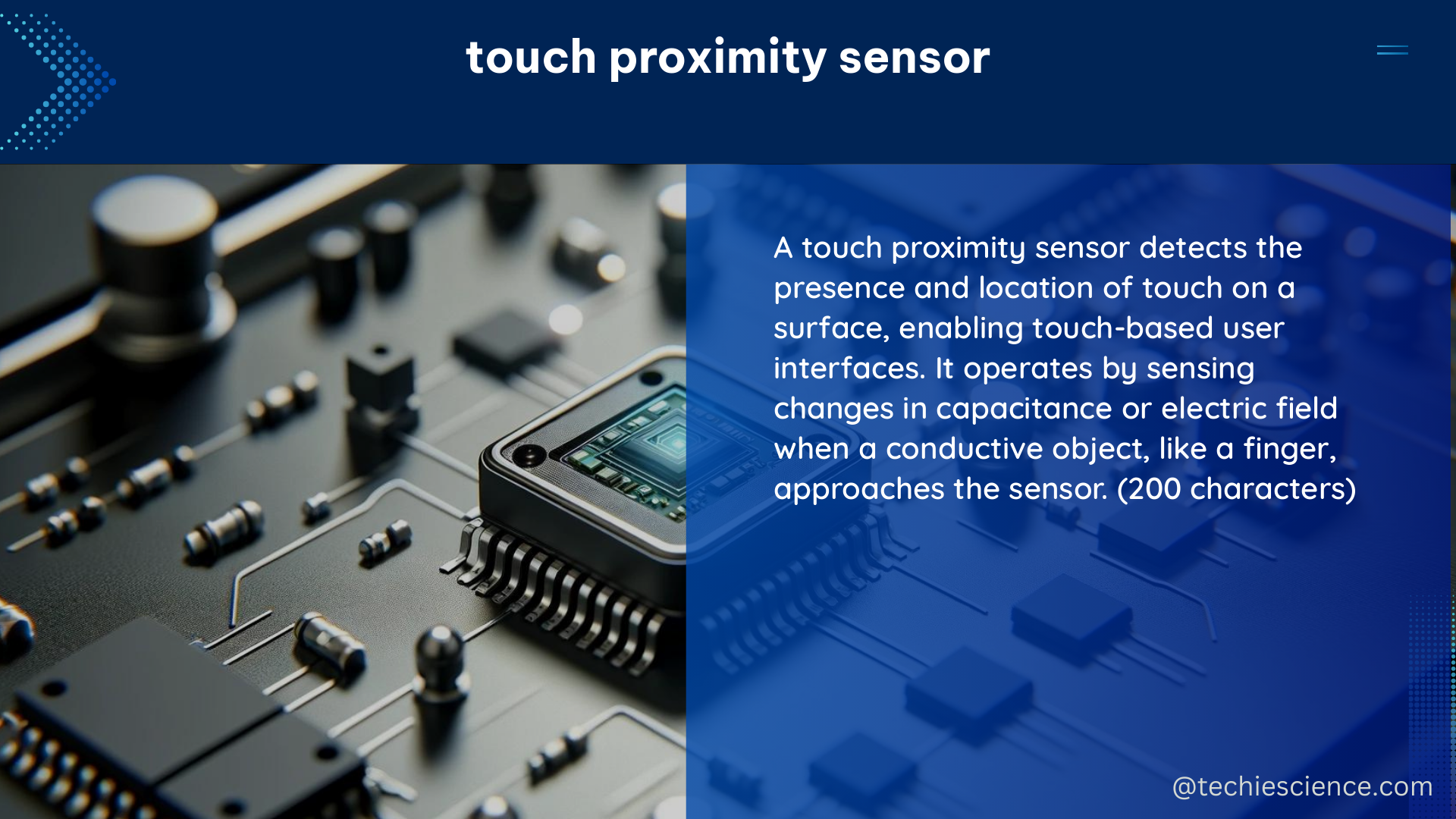Touch proximity sensors are advanced electronic devices that can detect the presence or absence of an object or person within a specific range, typically measured in centimeters or inches. These sensors are widely used in a variety of applications, including touch screens, smartphones, security systems, and more. Understanding the technical specifications and capabilities of touch proximity sensors is crucial for selecting the right sensor for a particular application and ensuring its reliable and accurate performance.
Measurement Range: Defining the Limits of Proximity Detection
One of the most critical aspects of touch proximity sensors is their measurement range, which is the distance over which the sensor can reliably detect an object or person. The touch proximity sensor used in a recent study had a measurement range of up to 10 meters, although detections could occur at weaker signal levels beyond this range. The sensor’s measurement range is determined by several factors, including:
-
Sensor Sensitivity: The sensitivity of the touch proximity sensor plays a crucial role in determining its measurement range. Highly sensitive sensors can detect objects and people at greater distances compared to less sensitive ones.
-
Signal Strength: The strength of the signal emitted by the touch proximity sensor is another key factor. Stronger signals can travel farther and be detected at greater distances.
-
Background Noise: The level of background noise in the environment can also impact the sensor’s measurement range. Higher levels of noise can interfere with the sensor’s ability to accurately detect objects and people.
Signal Strength: Measuring the Proximity of Individuals

Another important characteristic of touch proximity sensors is their signal strength, which is typically measured in decibels relative to milliwatts (dBm). In a recent study, the attenuation of the signal with distance was computed as the difference between the received and transmitted power. Proximity between individuals was asserted when the median attenuation over a given time interval exceeded a specified attenuation threshold of -75 dBm, which allowed the detection of proximity events between devices situated in the range of 1-1.5 meters.
Sensitivity: Detecting the Smallest Distances
The sensitivity of touch proximity sensors can also be expressed in terms of their minimum detectable distance, which is the shortest distance at which the sensor can reliably detect an object or person. In a study, the minimum detectable distance of an IR touch sensor that also functions as a proximity sensor was found to be 0.1 mm.
Power Consumption and Response Time: Optimizing Sensor Performance
In addition to measurement range, signal strength, and sensitivity, touch proximity sensors can also be characterized by their power consumption and response time. The study noted that sensors in close proximity exchange with one another a maximum of about 1 power packet per second, and the exchange of low-power radio-packets is used as a proxy for the spatial proximity of the individuals wearing the sensors.
Accuracy: Ensuring Reliable Proximity Detection
The accuracy of touch proximity sensors is another crucial factor to consider. Accurate proximity detection is essential for many applications, such as security systems and touch-based user interfaces. Factors that can impact the accuracy of touch proximity sensors include environmental conditions, interference from other electronic devices, and the sensor’s calibration and configuration.
Applications of Touch Proximity Sensors
Touch proximity sensors have a wide range of applications, including:
-
Touch Screens: Touch proximity sensors are commonly used in touch screen devices, such as smartphones and tablets, to detect the presence of a user’s finger or stylus and enable touch-based interactions.
-
Security Systems: Touch proximity sensors can be used in security systems to detect the presence of individuals and trigger appropriate actions, such as unlocking doors or activating alarms.
-
Robotics and Automation: Touch proximity sensors are used in robotics and automation systems to detect the presence of objects or people and enable safe and efficient operation.
-
Industrial Applications: Touch proximity sensors are used in various industrial applications, such as material handling, process control, and safety monitoring.
-
Consumer Electronics: Touch proximity sensors are found in a variety of consumer electronics, such as smart home devices, wearables, and gaming controllers, to enable touch-based interactions and proximity-based features.
Conclusion
Touch proximity sensors are complex and highly versatile electronic devices that play a crucial role in a wide range of applications. By understanding the technical specifications and capabilities of these sensors, including their measurement range, signal strength, sensitivity, power consumption, response time, and accuracy, you can select the right sensor for your specific needs and ensure its reliable and accurate performance.
References
- Sensor-based proximity metrics for team research. A validation study. https://www.ncbi.nlm.nih.gov/pmc/articles/PMC8062328/
- Touch Sensors with Overlapping Signals: Concept Investigation on … https://arxiv.org/pdf/1802.08209
- Sensors in close proximity exchange with one another a maximum of about 1 power packet per second, and the exchange of low-power radio-packets is used as a proxy for the spatial proximity of the individuals wearing the sensors. https://hal.inria.fr/hal-01104764/document

The lambdageeks.com Core SME Team is a group of experienced subject matter experts from diverse scientific and technical fields including Physics, Chemistry, Technology,Electronics & Electrical Engineering, Automotive, Mechanical Engineering. Our team collaborates to create high-quality, well-researched articles on a wide range of science and technology topics for the lambdageeks.com website.
All Our Senior SME are having more than 7 Years of experience in the respective fields . They are either Working Industry Professionals or assocaited With different Universities. Refer Our Authors Page to get to know About our Core SMEs.